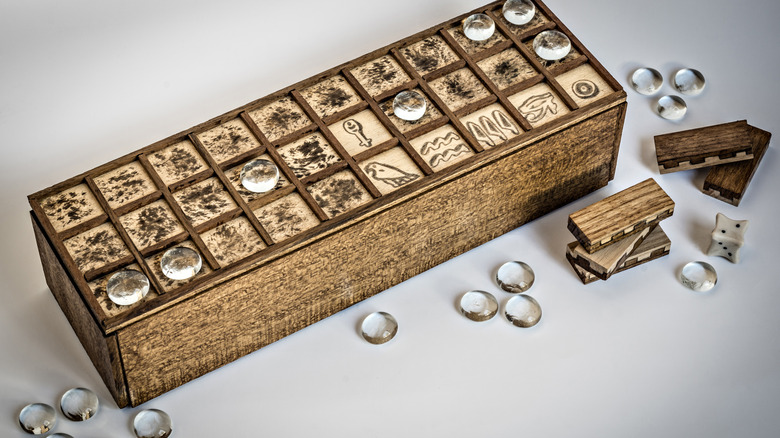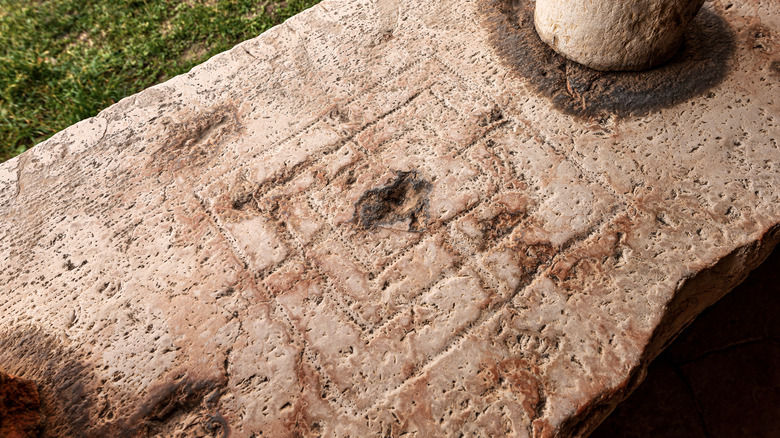The Reason Viking Burials Featured Board Games
When you think board games, the classics are probably first on your list, like Monopoly (1933 as per Day in Tech History), Risk (1957 via Dicebreaker), and Scrabble (1933 from Scrabble). But board games themselves go back further than that — 4,600 years, in fact, with the introduction of the Royal Game of Ur. The rules for this ancient Mesopotamian effort at table fun were found on a cuneiform tablet from 177 B.C. A Babylonian astronomer noted how two players should use the board, racing to victory, and collecting fortunes along the way. Senet (see a modernized version above), a favorite of both King Tut and Queen Nefertari from about 3100 B.C., offers a similar-themed match where two contestants vie to reach the board's end first, using sticks or bones to discover how many squares they can move (via The British Museum).
The Vikings, who lived from the 9th to 11th century, also amused themselves with board games when they weren't trading, exploring, or raiding new lands (from Britannica). Such diversions were popular, and all classes engaged in them. Their wooden boards featured intricate carvings and pieces cobbled from stone, wood, bone, and sometimes, even, glass, antler, and amber. Besides serving as an important part of recreation, games like this went with Vikings into the afterlife and parts of them have been discovered in their burial places, according to Board Game Tips.
Even games are important in the afterlife
Some of the most-played games included Nine Men's Morris (known as "hnefatafl" or "nitavl" to Vikings — see a version of the game above), a war game, similar to chess, that pitted the king against an army bent on removing his protection and used dice to determine moves (from the Museum of Denmark). Diversions like this were included with the Viking's body so the warrior could enjoy himself in the afterlife, according to Realm of History. For example, in an archeological site on the Orkney Islands, in Scotland's Northern Isles, two such games were discovered in burial sites. They are part of the 36 board games found amid Viking graveyards throughout Northern Europe.
The ones in Orkney included a male who was interred with 25 game pieces carved from bone and another site for an adult male, an elderly woman, and a boy — buried with 22 pieces formed from whalebone. The website quoted Mark Hall of the Perth Museum, who explained, "Thus equipping the deceased in burial would have seen them provided for in afterlife both as an act of remembrance and to make sure the dead were not lacking in anything, ensuring that they would move on and not — disturbingly — be drawn back to the living world."

